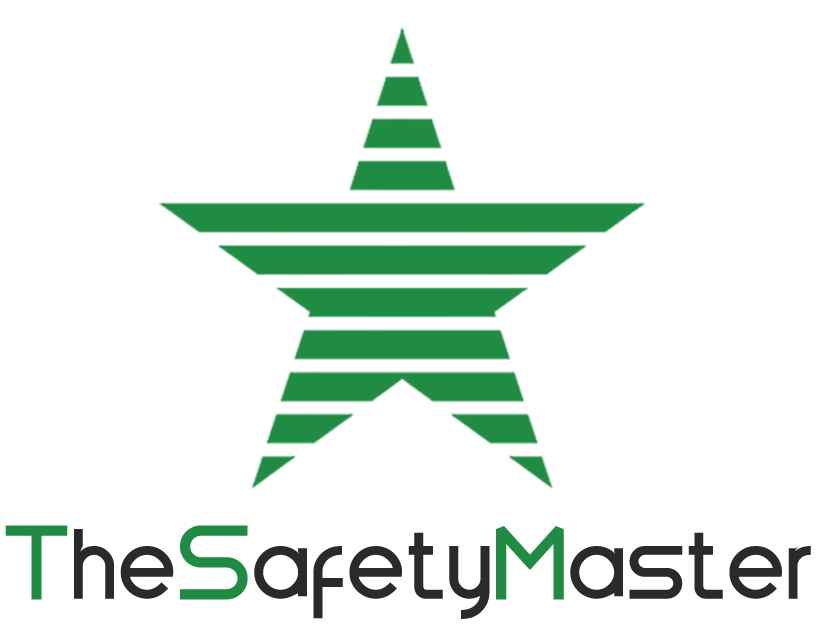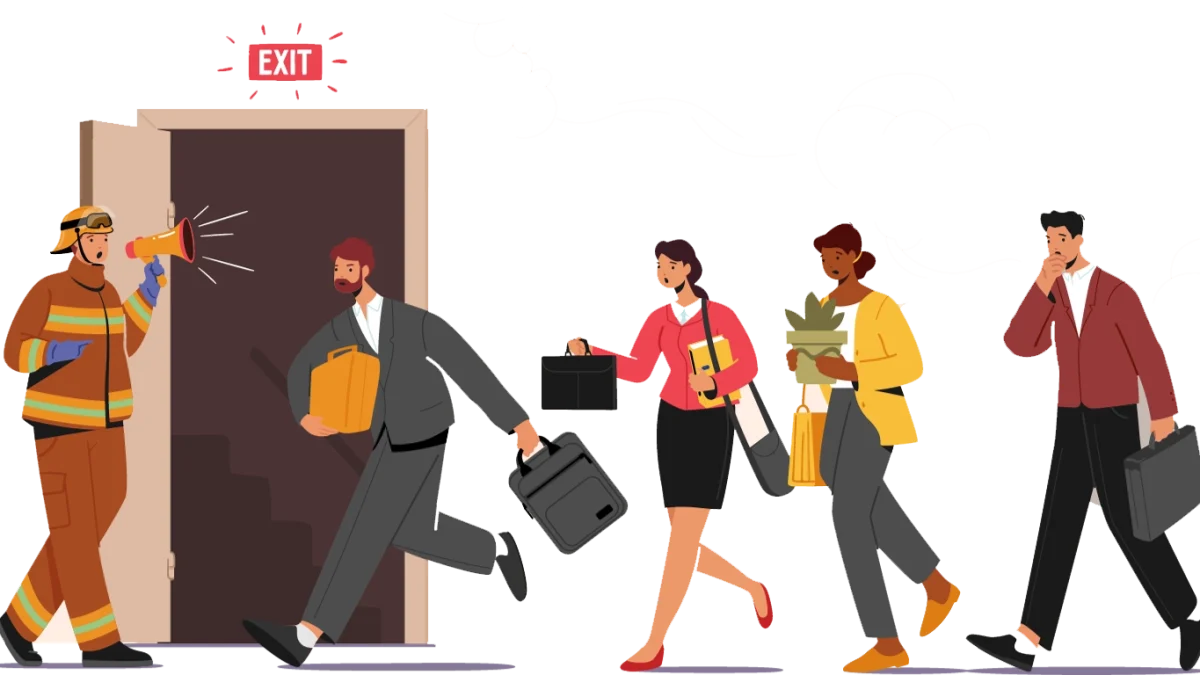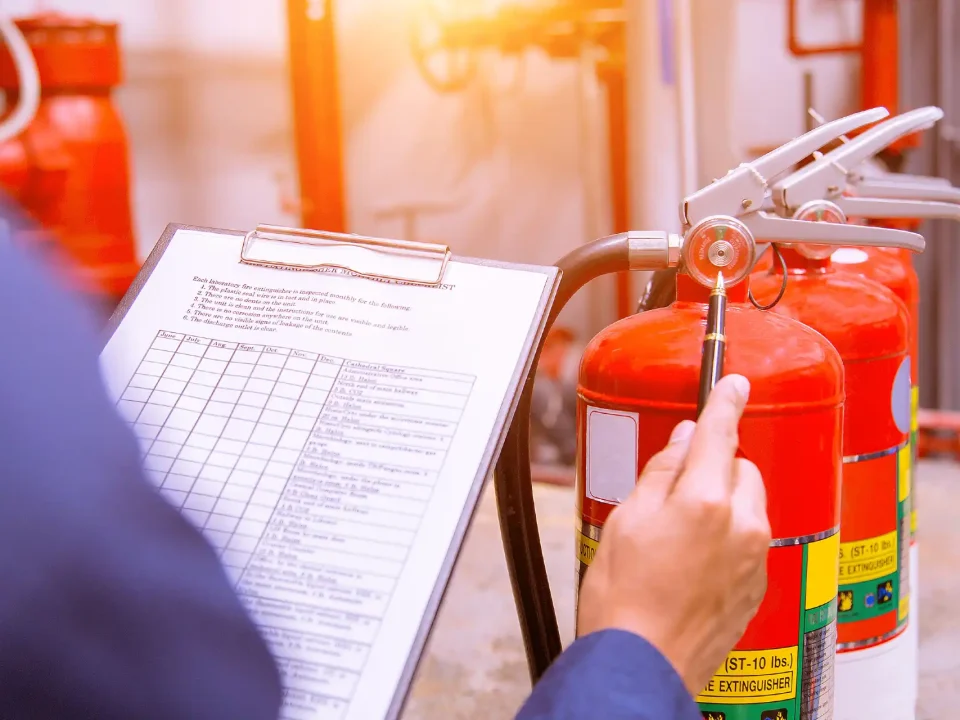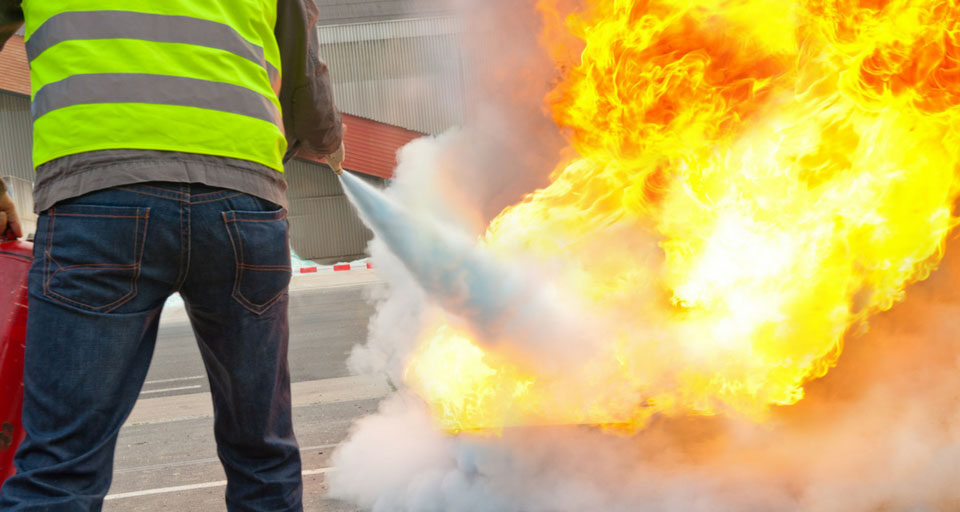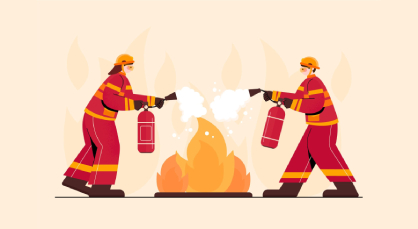How Do the Consultants Perform Fire Safety Audits in the Workplace?

Fire Safety Audit as per National Building Code 2016: A Complete Guide
May 20, 2025
Why Behaviour-Based Safety Implementation is a Game – Changer for Ensuring Employee Well-being and Productivity
May 20, 2025Workplace fire safety is a vital aspect of occupational health and safety. A fire outbreak can cause catastrophic damage—not just in terms of infrastructure loss but also in risking human lives. To minimize such risks, companies turn to professional audits conducted by experienced Safety Consultant teams. These consultants use a structured approach to evaluate and improve fire safety preparedness, ensuring compliance with legal standards and minimizing vulnerabilities.
But how exactly do consultants carry out a Fire Safety Audit in the workplace? Let’s walk through the comprehensive process.
Understanding the Fire Safety Audit
A Fire Audit is a methodical inspection that helps identify potential fire hazards, evaluates current fire protection systems, and ensures compliance with national codes such as the National Building Code (NBC) 2016, the Factories Act, and other local safety regulations.
Professional consultants don’t just inspect physical installations—they also review procedures, documentation, human behavior, and emergency preparedness to create a well-rounded risk profile.
Step-by-Step Process of a Fire Safety Audit
1. Pre-Audit Planning and Coordination
The audit process typically begins with a pre-audit meeting between the consultants and the facility management. This session helps define the scope, understand the facility’s nature, and gather preliminary data such as:
- Building layout and architectural plans
- Existing fire safety documentation
- Types of processes and materials involved
- Past incident reports (if any)
During this stage, consultants identify high-risk areas that need deeper evaluation and plan the resources needed for the site visit.
2. On-Site Inspection and Visual Assessment
Once on-site, auditors perform a visual walkthrough of the facility to evaluate:
- Availability and condition of fire extinguishers
- Functionality of fire alarms, smoke detectors, and sprinklers
- Proper signage for fire exits and evacuation paths
- Condition of electrical wiring and panels
- Storage and handling of combustible materials
- Access for emergency vehicles and fire tenders
Special attention is paid to high-risk zones such as chemical storage, electrical rooms, and production areas.
3. Documentation and System Review
A thorough review of safety records and fire systems documentation follows. This includes:
- Fire system maintenance logs
- Emergency evacuation plans
- Training records of employees
- Fire drill reports
- Statutory compliance certificates
- Risk assessments and previous audit reports
This stage is essential to validate whether preventive maintenance and training programs are being conducted as per legal norms.
4. Human Factor and Training Evaluation
Even the most advanced fire systems are ineffective without trained personnel. Consultants interview employees, observe their awareness of fire procedures, and evaluate their preparedness for emergencies. Questions may include:
- Do employees know the location of fire exits?
- Are fire extinguishers regularly inspected and used properly?
- Are safety officers assigned and trained?
If gaps are found, the consultant recommends training sessions and fire drills tailored to the workplace’s specific risks.
5. Risk Identification and Hazard Analysis
Fire audits often intersect with broader hazard studies. For facilities with industrial operations or chemical processes, fire risks are tied closely to operational hazards. Here, integration with a Hazop Study (Hazard and Operability Study) becomes essential.
Hazop is a structured and systematic technique for examining complex operations to identify what could go wrong, including fire-related risks. This ensures that both process safety and fire hazards are comprehensively analyzed.
6. Gap Analysis and Compliance Check
The audit team then compares existing conditions with the requirements of:
- National Building Code 2016
- Local fire safety guidelines
- Industry best practices
- Internal safety policies
This gap analysis helps highlight areas that are non-compliant or underprepared. For instance, blocked fire exits, outdated extinguishers, or missing smoke detectors would be clearly pointed out in this phase.
7. Integration with Process Safety Management (PSM)
In high-risk industries like chemical, pharmaceutical, or petroleum sectors, fire safety cannot be isolated. It must be an integral part of Process Safety Management (PSM), which focuses on the safe design and operation of hazardous processes.
Consultants evaluate if fire prevention is embedded within PSM strategies by checking for:
- Fire and explosion risk assessments
- Interlocks and automatic shutdown systems
- Containment and ventilation controls
- Integration of alarms with central control systems
This step ensures that the fire safety strategy is proactive, not reactive.
8. Detailed Audit Report and Recommendations
Once the inspection and assessments are complete, the consultant prepares a comprehensive Fire Audit report, which typically includes:
- Summary of findings and risk areas
- Photographic evidence and location mapping
- Regulatory compliance status
- Recommendations with priority levels (high/medium/low)
- Training needs and drill frequency suggestions
- A roadmap for corrective and preventive actions (CAPA)
This document becomes a vital reference for the safety committee and facility management to implement improvements.
9. Follow-Up and Re-Audit Support
A good Safety Audit does not end with handing over the report. Reputed consultants often provide support for implementation and conduct follow-up visits to ensure that suggested actions are being adopted. Some organizations also schedule periodic re-audits to maintain ongoing compliance.
Why Hire a Professional Safety Consultant?
Hiring a professional Safety Consultant ensures that fire safety audits are conducted with deep technical knowledge, industry expertise, and regulatory insight. Here’s what they bring to the table:
- Objectivity: External consultants provide an unbiased view of the safety posture
- Expertise: Years of hands-on experience in auditing various industrial sectors
- Compliance: In-depth understanding of legal and regulatory frameworks
- Customization: Tailored recommendations based on unique workplace challenges
- Training: Capacity to conduct fire safety drills and awareness sessions
Final Thoughts
Fire safety is a non-negotiable aspect of workplace management, and a professional Fire Safety Audit ensures that your workplace is not just compliant—but truly safe. From on-site evaluations to documentation reviews and integration with broader safety frameworks like Hazop Study and Process Safety Management, a consultant-led audit leaves no stone unturned.
Choosing a trusted partner like The Safety Master helps organizations strengthen their fire defense mechanisms, boost employee confidence, and build a resilient safety culture.
Ready to secure your workplace? Book your Fire Audit with The Safety Master today and ensure you’re one step ahead of fire hazards.
